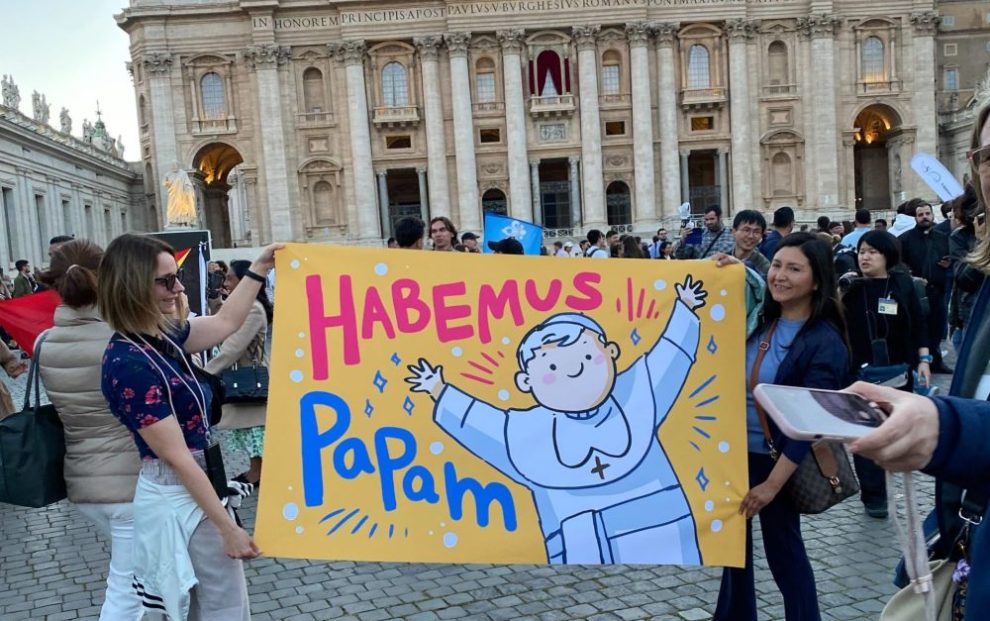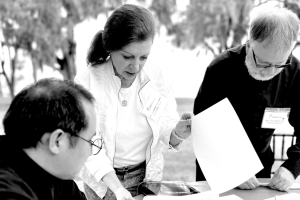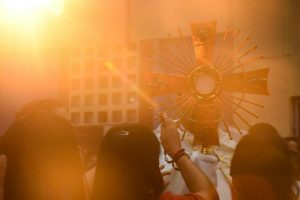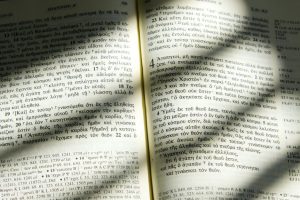“The whiter it gets, the pope-ier I feel!” shouted Gabriel Carberry. Carberry, 27, who came from the Scottish Highlands to St. Peter’s Square to witness the conclave.
The recent graduate of a master’s degree in theology program, Carberry announced around 5:45 p.m. that he felt that this was the vote that would result in white smoke. Less than half an hour later, a plume of white smoke spilled out of the chimney.
And then, on the balcony, came an unexpected man. Like Francis, he hails from the Western Hemisphere, but this time, from the United States. Many people—including some Americans—confidently proclaimed, even right before the white smoke appeared, that an American would never be pope.
Yet, as Dominique Mamberti, Senior Cardinal Protodeacon, walked out on the balcony, he announced the name of the new pope: Leo XIV, Cardinal Robert Prevost. An American?! The crowd murmured and shouted to one another.
“Non troppo Americano,” one ex-patriate described him to her Italian neighbors. “Not too much of an American.”
The American ex-pat in question, Barbara Giuliano, has been living in Rome for 22 years. She is not Catholic, but rather Orthodox. “We have more in common than we do that divides us,” Giuliano said.
Her husband is Catholic, as are her nieces and nephews. But despite living in Rome through two previous papal conclaves, this was the first she attended in person. Something about how Pope Francis had appeared in St. Peter’s Square at Easter and then died the next day moved her. “I felt an absence,” she said. She attended the wake in St. Peter’s Basilica, waiting for 8 hours for 10 seconds with the open casket. Would she do it again? “Absolutely,” she said.
The pope’s last Easter appearance was not far from anyone’s mind, including the 267th pope. “We still keep in our ears that weak but ever courageous voice of Pope Francis blessing Rome,” Pope Leo XIV said in his first “Urbi et Orbi” blessing, a little over an hour after the white smoke and bells of St. Peter’s rang.
The conclave opened on Guiliano’s 43rd birthday. She nearly skipped her own birthday dinner to watch the chimney in the square. She said she felt a pull to be there. “To be a witness,” she said, “to history, to the future—to a new chapter. Each pope is a new chapter in a very long book.”
Leo XIV is a new chapter in that book. But, even in his first appearance he demonstrated he was weaving together old and new traditions. He appeared wearing the traditional papal red cape, called the mozzetta. His name reaches back into the 19th century, the last Leo XIII penned Rerum Novarum (On Capital and Labor), the celebrated first encyclical of Catholic social teaching. And he emphasized that the church, as disciples together in Christ, would continue walking the synodal way insieme, or “together,” he repeatedly emphasized.
Last August, in a talk at St. Jude Parish in New Lenox, Illinois, Cardinal Prevost spoke about the synodal way, saying. “The church is not father up here [on the altar] on Sundays, and then spectators, but that rather, all of us, in different ways . . . we’re all called to be a part of this church together.”
In his “Urbi et Orbi,” Leo XIV echoed the same call, speaking in Italian.
“We want to be a synodal church, a church that walks, a church that always seeks peace, that always seeks charity, that always tries to be close especially to those who suffer,” Pope Leo XIV said, before ending his address with a Hail Mary.
Image: Courtesy of Renee Roden












Add comment